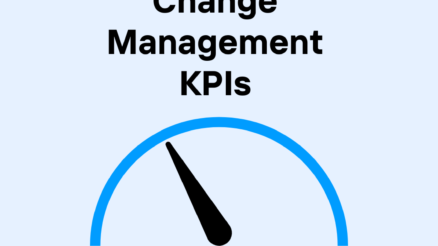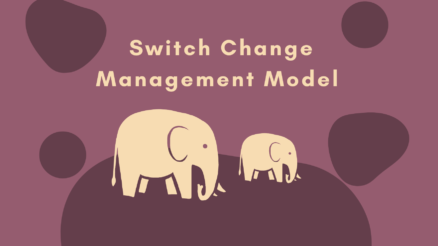Cynthia Scott and Dennis Jaffe created the Scott and Jaffe Change Model, often referred to as the Scott and Jaffe Resistance Cycle, which was first presented in their article “Survive and Thrive in Times of Change.”
This model is similar to Elisabeth Kubler-Ross’s research work which emphasized the manner in which people dealt with tragedy, sadness, or sorrow.
The grief curve created by Kubler-Ross serves as the foundation for the Scott and Jaffe Change Model. Based on her grief curve, she developed five stages of sadness: anger, denial, depression, bargaining, and acceptance.
Scott and Jaffe similarly outlined the entire psychological state and how people react to change. There are numerous ways that people can resist change. Sometimes people subtly hinder the transformation. Sometimes they could explicitly try to undermine it.
Lets discuss in detail what is Scot and Jaffee Change Model is all about and how does it work, what are its 04 stages and what are pros and cons of this model.
Scot and Jaffee Change Model
The focus of Scott and Jaffe Change Model is on how individuals affected by the change. It essentially explains on how people adjust to organizational change as it occurs.
Understanding human psychology guides us to understand how people react to change. Thousands of years ago, human beings developed defense systems to deal with what to do in the event of a threat.
The same human psychology come into play when there is something uncertain and unknown such as change. To cope with the changes in organization and modern workplace, people are still adopting antiquated psychological techniques.
The following points explain this model’s salient features:
- Change happens gradually, depicted on the horizontal axis from left to right. The horizontal axis’s left side is concerned with the past, and its right side is concerned with the future.
- The vertical axis, which focuses on overall awareness, implies that as time passes, our priorities shift from being more concerned with the outside world to be more introspective before giving the external world second priority.
- The U-Shaped curve illustrates the psychological transitions a person experiences when facing a transformation. The U-shaped curve depicts the effect of change on people in terms of growing disempowerment or regaining empowerment.
O4 Stages of Transition
We all go through four stages of transition, according to Scott and Jaffe change model:
1. Denial
In the first stage of denial, people fail to accept change and they are unable to realize that change is happening. People think that everything is same and nothing is changed. They live a false thought that everything is normal. This denial may come in a variety of shapes.
At organizational level employees feel like:
- They pretend that change is not happening in their organization and they totally ignore it.
- They act as if change won’t ever occur
- They feel highly anxious, and usually, their performance will suffer.
2. Resistance
In this stage, acceptance is resisted even though employees recognize the change has occurred and cannot be ignored. They dread loss and fear of losing things like their job, career, money, relationship is there.
They believe that what they receive in result of change is nothing what they’re going to lose due to this change.
During this stage, they might covertly show resistance to the change or they start resist change openly. They resist to the change with rage, frustration and harsh criticism. They’re reluctance to participate in change activities.
Due to this resistance, the organization experiences a loss in productivity and performance and it also affects organizational culture and relationship among team members and other stakeholders.
3. Exploration
This stage starts when employees reach the point where they are unable to resist any longer and begin to acknowledge that the transition is definitely occurring.
They begin to consider what the change means to us. They start looking into the implications of the transition for the organization. This stage of transformation is highly critical because if the wrong move is made people may return to the last stage that is of resistance.
During the exploration stage, the organization develops coping strategies or adapting mechanisms to deal with resistance. It concentrates on the prospective objectives and priorities by empowering individuals and enabling them to test new procedures out gradually.
It’s important to understand that this phase is crucial if you’re a manager. You have the risk of sending members of your team back to the resistance stage if you rush to address resistance and lose your patience.
4. Commitment
After exploring the change, people recognize its opportunities and move into the commitment stage. People make commitments to their futures at this stage.
As they make progress through this stage, they begin to feel taking things in their control. They start to commit to the future and they accept responsibility of embracing change.
At this point, people feel more powerful and are willing to embrace new procedures or methods. Since they’re developing new abilities, new work methods, and anticipating the future, this stage is more exciting.
Let’s discuss some of the Pros and Cons of Scott and Jaffe’s Change Model.
Advantages of Scott and Jaffe’s Change Model
It provides a framework for understanding and managing change. This model helps to clarify the process of change and can provide a useful guide for change leaders and team members seeking to implement change effectively.
By recognizing the stages of change, change leaders can anticipate and address resistance to change more effectively. This can help to build coalition of support for change and improve its chances of success.
The model promotes open and honest communication about change, and can encourage collaboration and cooperation among team members as they work through the process of change together.
By going through the process of change, individuals can learn more about themselves and their own reactions to change, and can develop new skills and capabilities as they embrace new ways of doing things
Limitations of Scott and Jaffe Change Model
One potential disadvantage of the Scott and Jaffe Change Model is that it may not accurately reflect the complexity and diversity of individual responses to change. People may not necessarily go through these stages in a linear or predictable way, and their reactions to change may depend on a variety of factors such as their personality, past experiences, and the specific nature of the change itself.
Additionally, the model may not account for the role of external factors such as cultural or organizational influences on people’s reactions to change.
Another potential disadvantage of the model is that it may oversimplify the process of change and fail to take into account the nuances and challenges of implementing change in practice. Change can be a complex and difficult process, and there may be many different factors that influence its success or failure. The Scott and Jaffe Change Model may not provide a detailed or comprehensive guide for addressing these challenges.
It’s important to keep in mind that any model or framework is a simplification of reality, and that it may not fully capture the complexity and diversity of the real world. It’s always important to consider the limitations and potential biases of any model or framework when applying it in practice.
Final Words
he Scott and Jaffe Change Model is often used in organizational change management to help leaders understand and manage employee reactions to change, and to develop strategies for implementing change effectively. It can also be applied in personal development to help individuals understand and manage their own reactions to change.
There is no change model and framework that explains entire change process. Every change model has limitations and advantages. Similarly, Scott and Jaffe change model gives us insights about how does people reacts to organizational change and how they gradually move from denial of change to commitment themselves to change.



